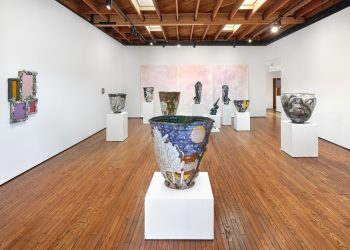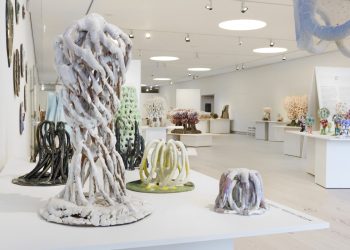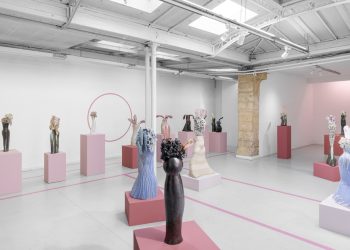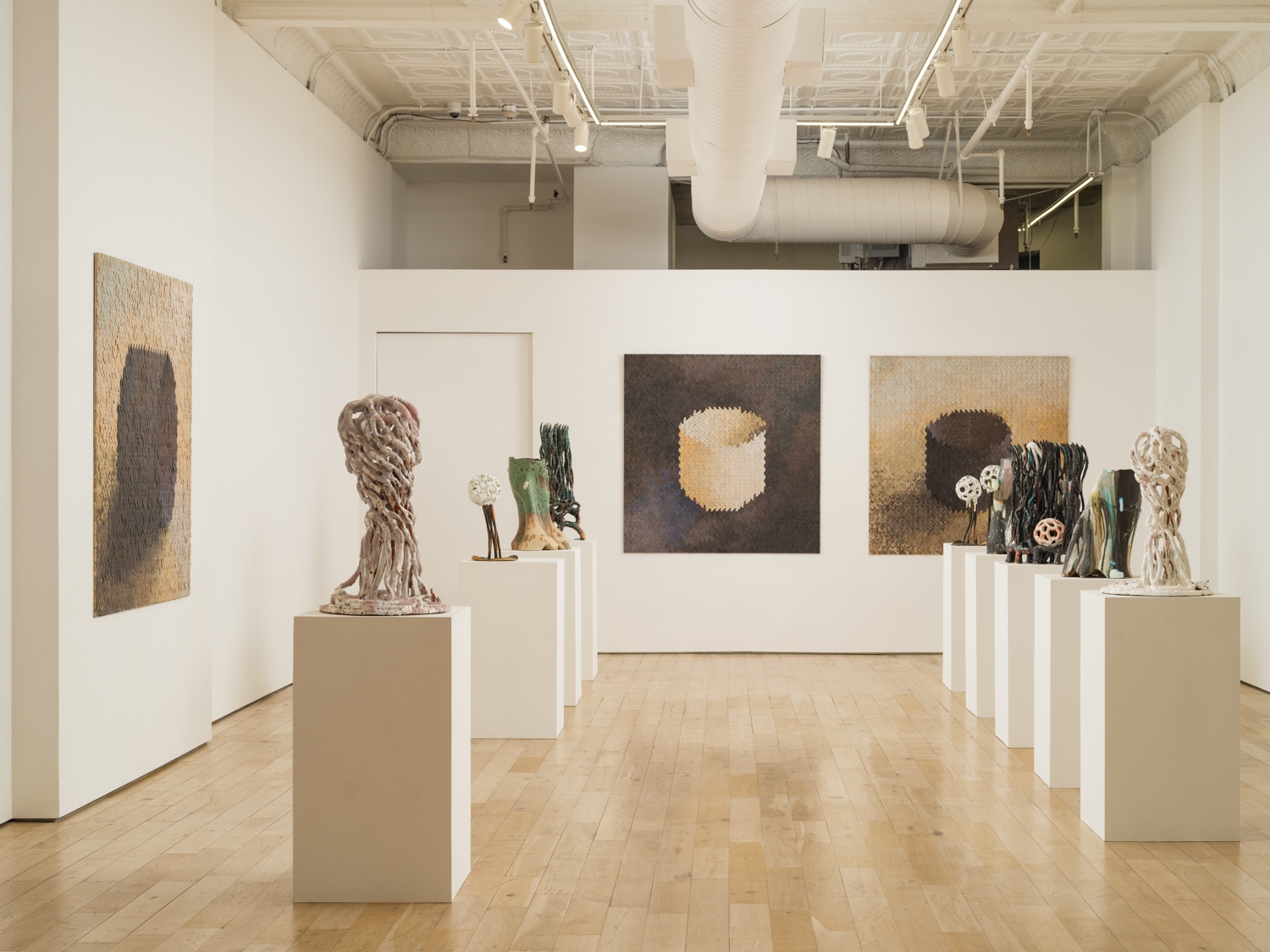
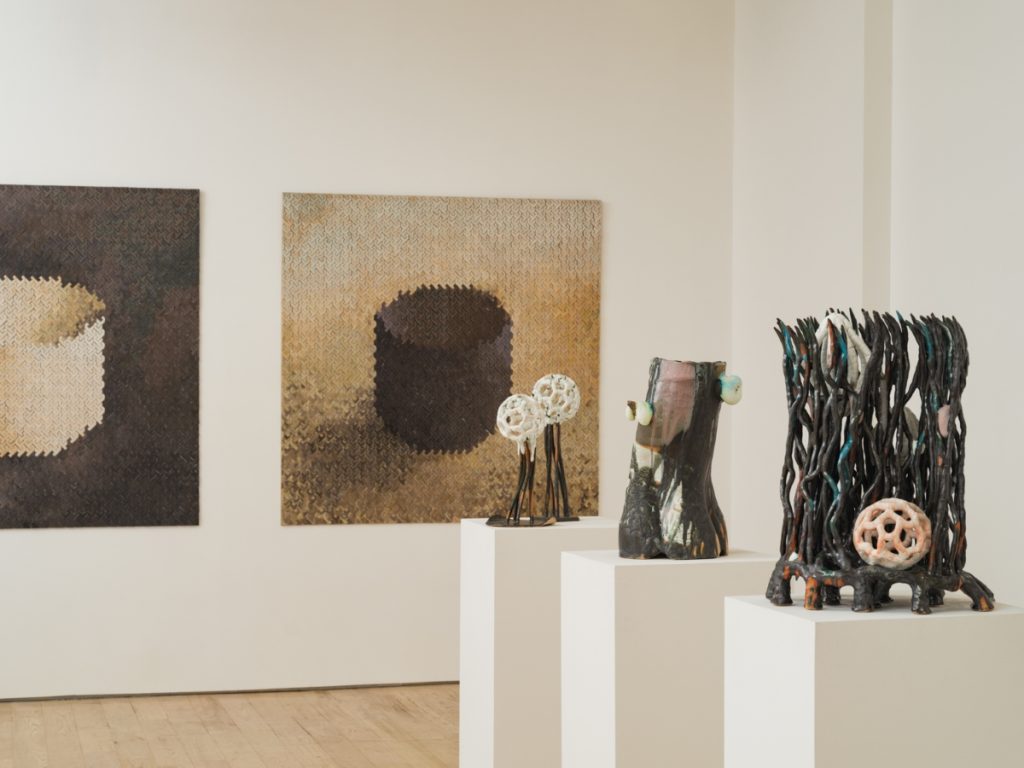
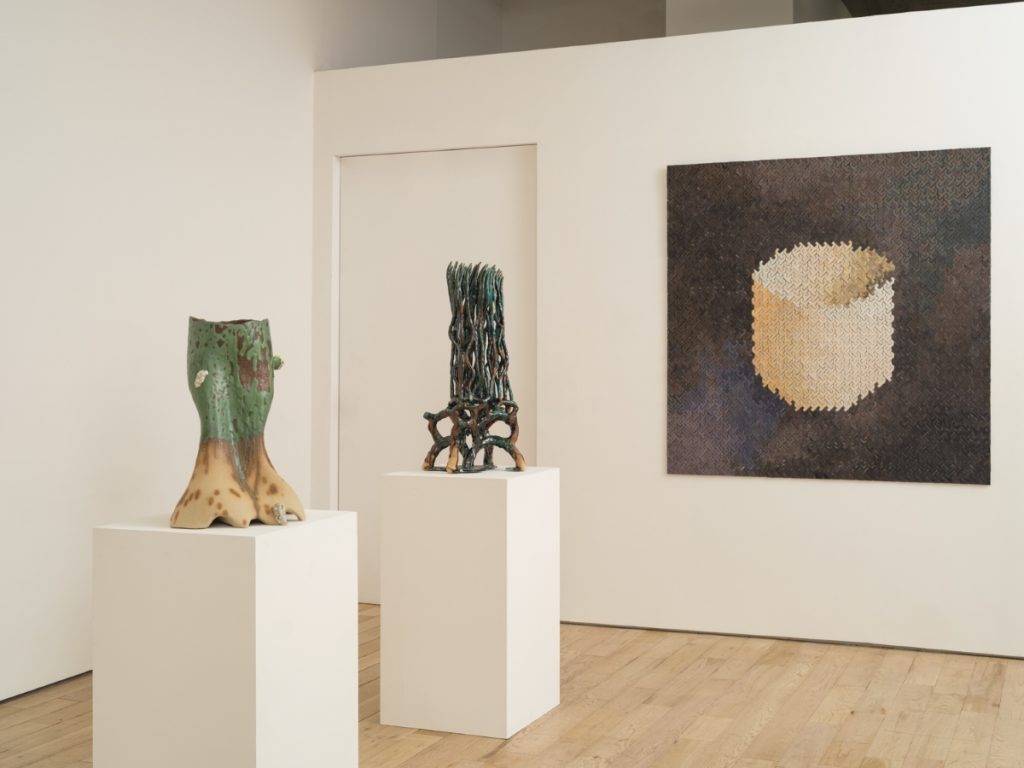
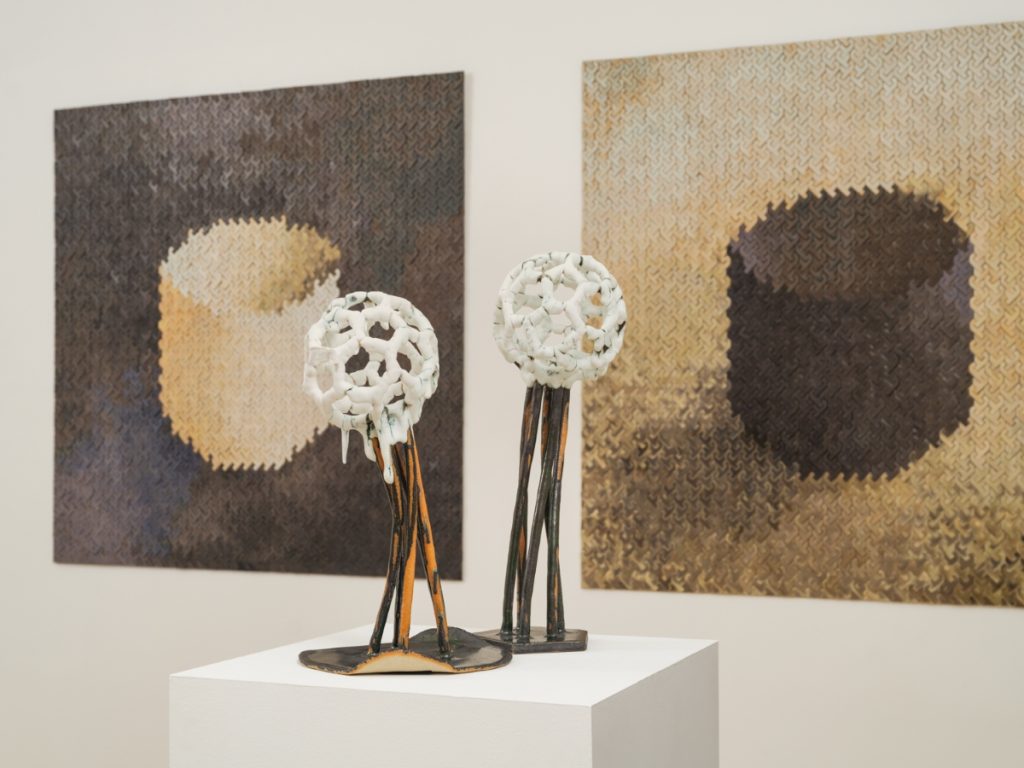
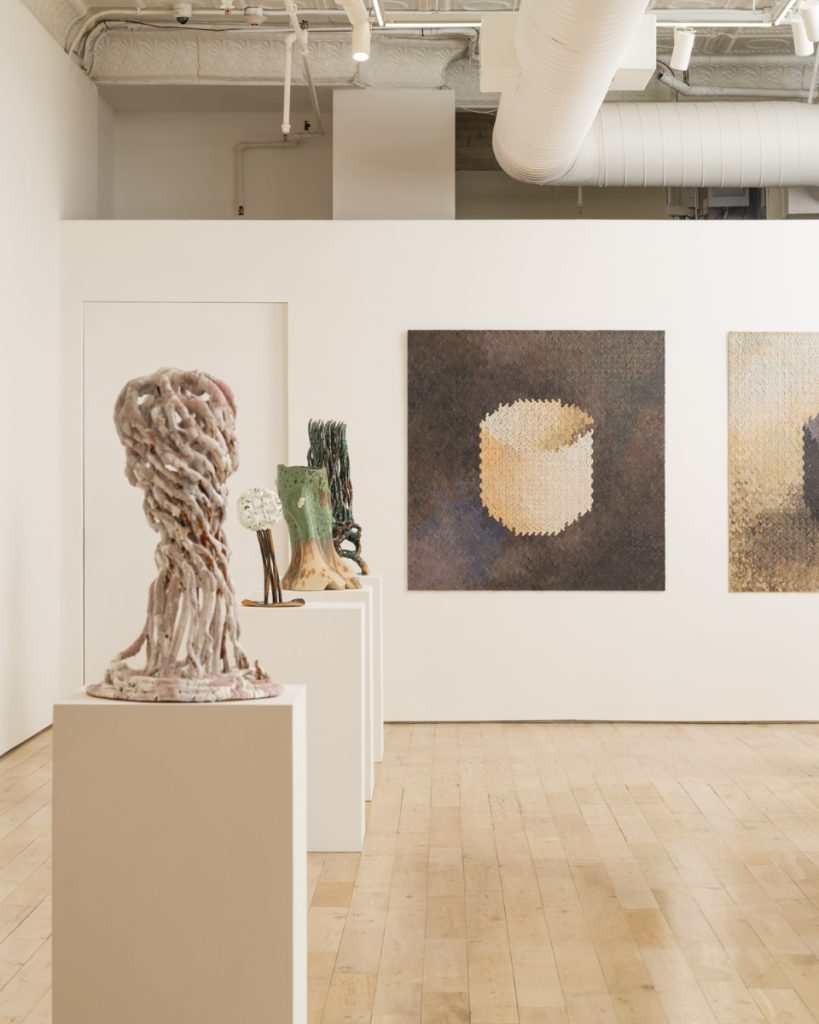
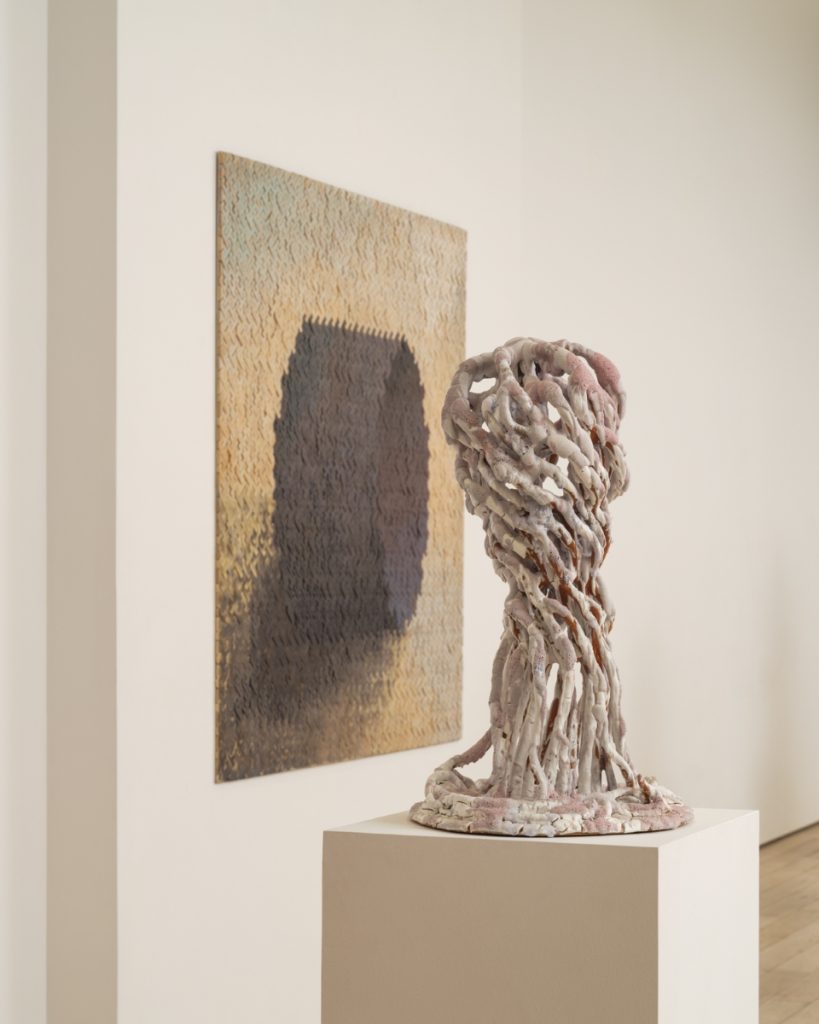
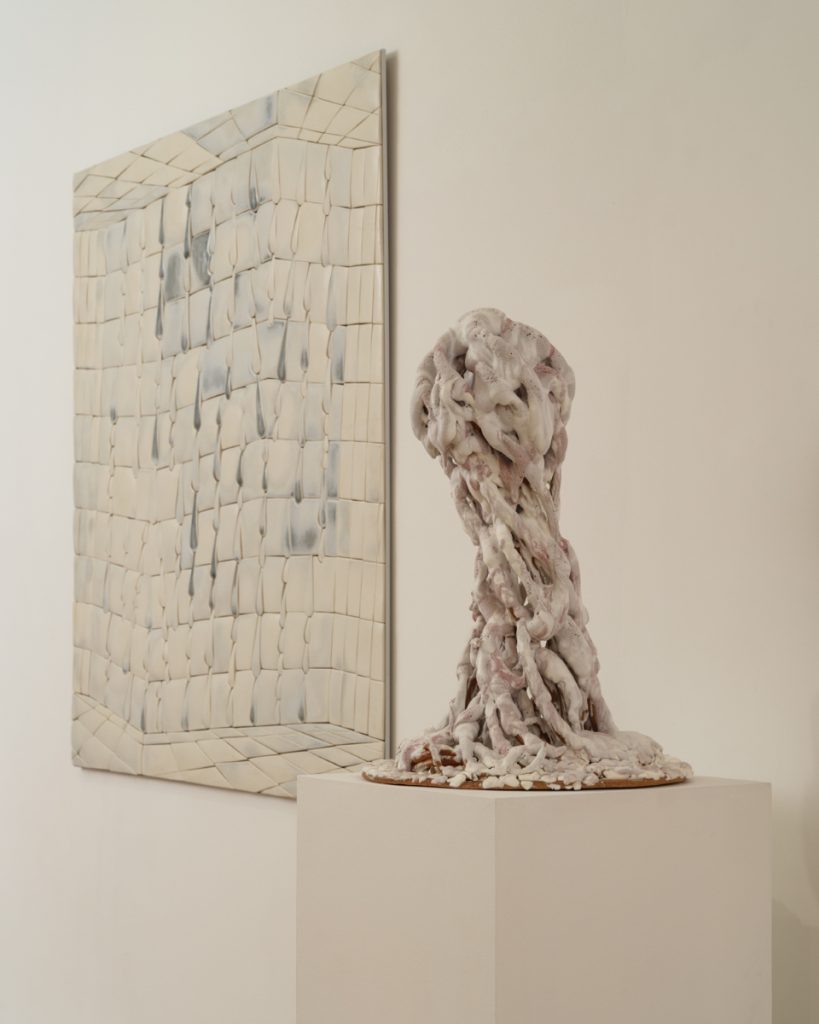
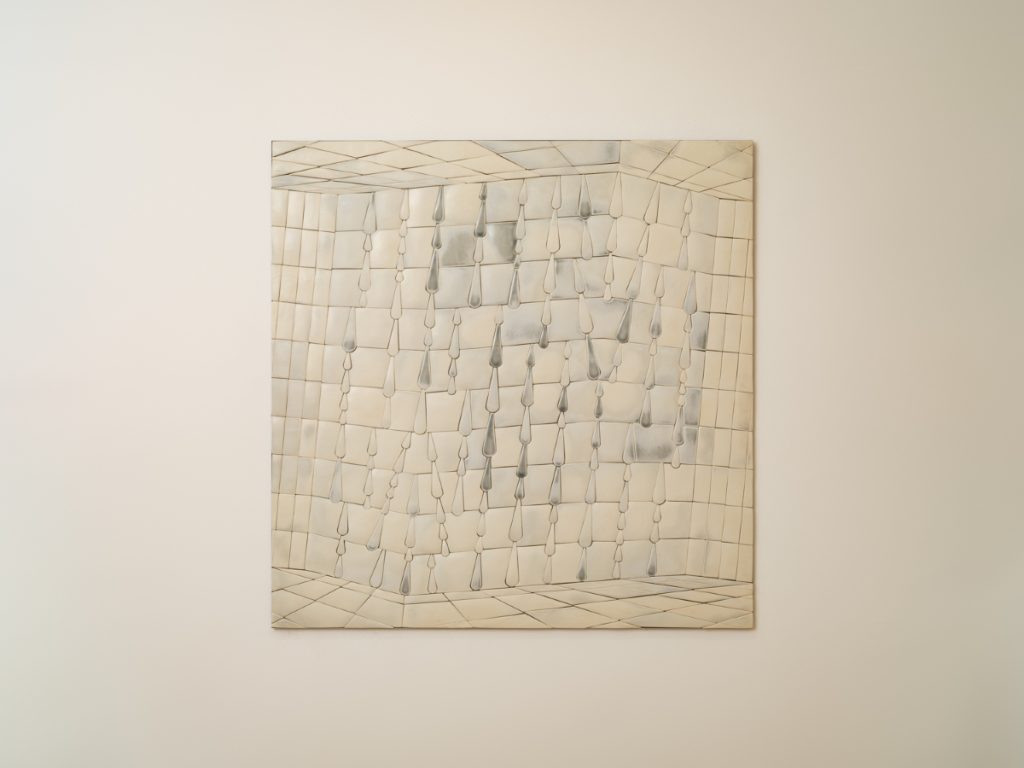
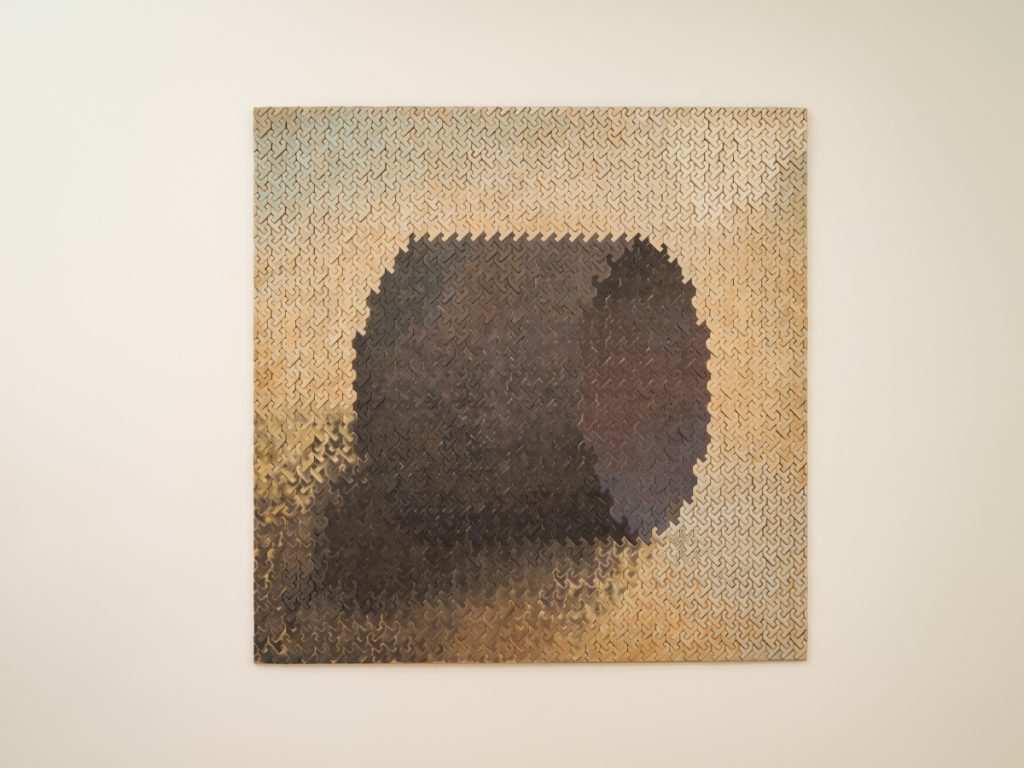
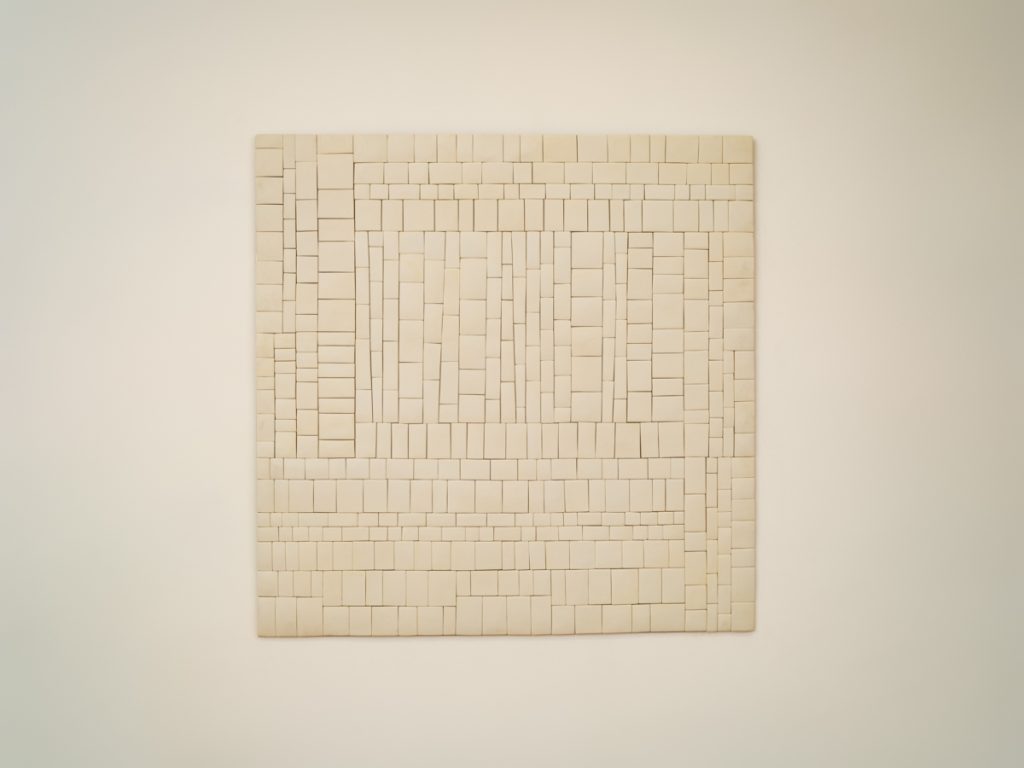
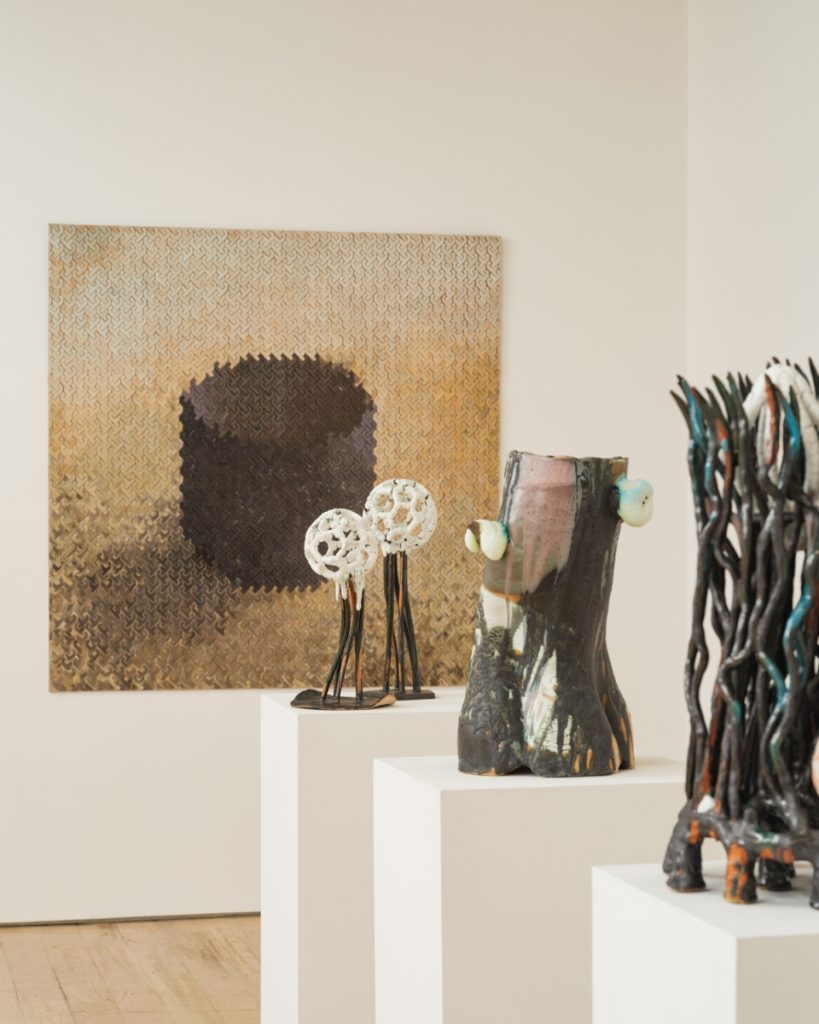
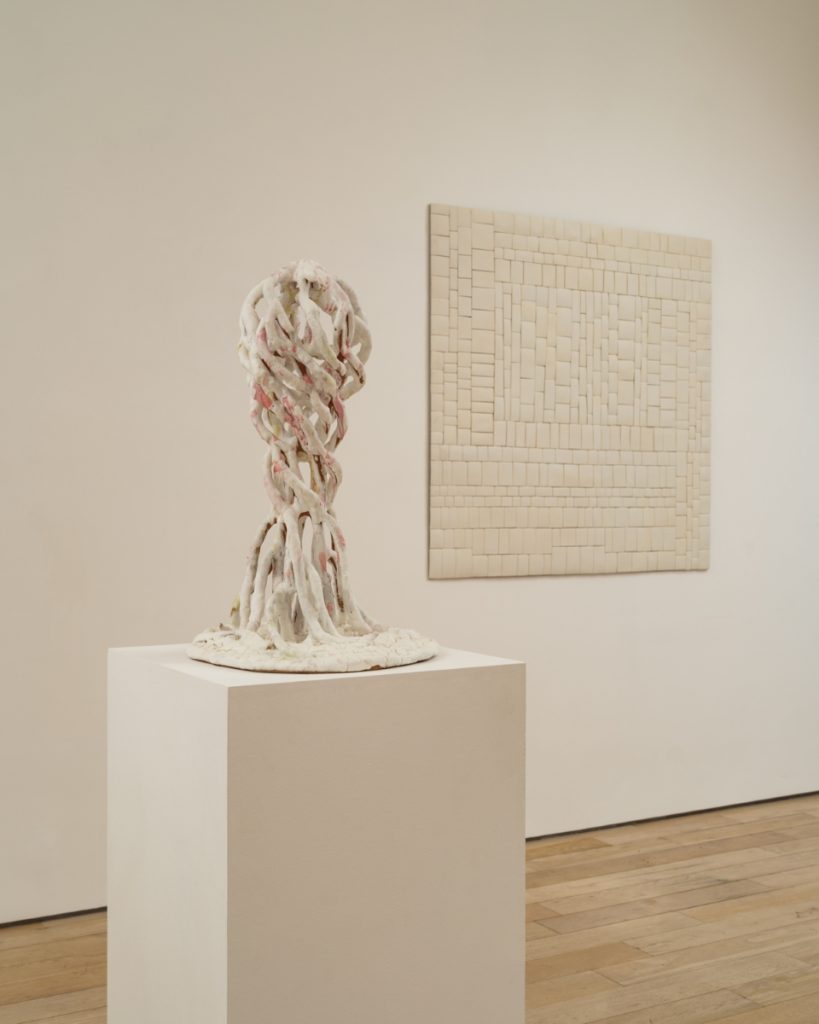
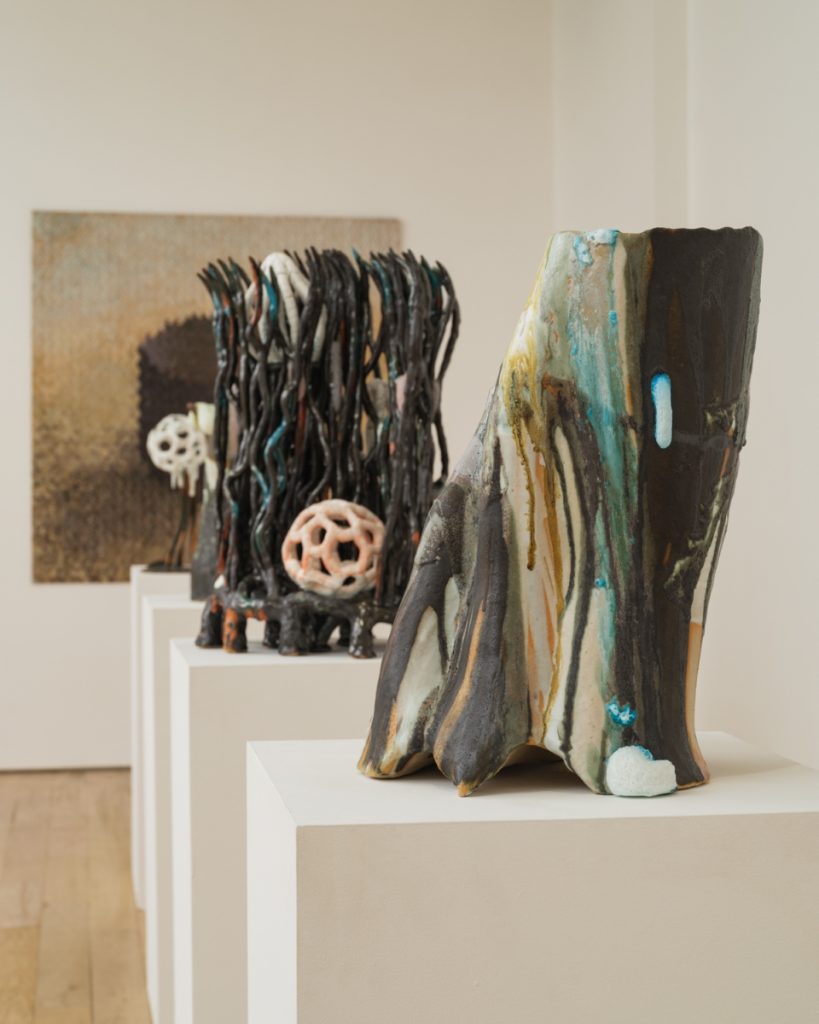
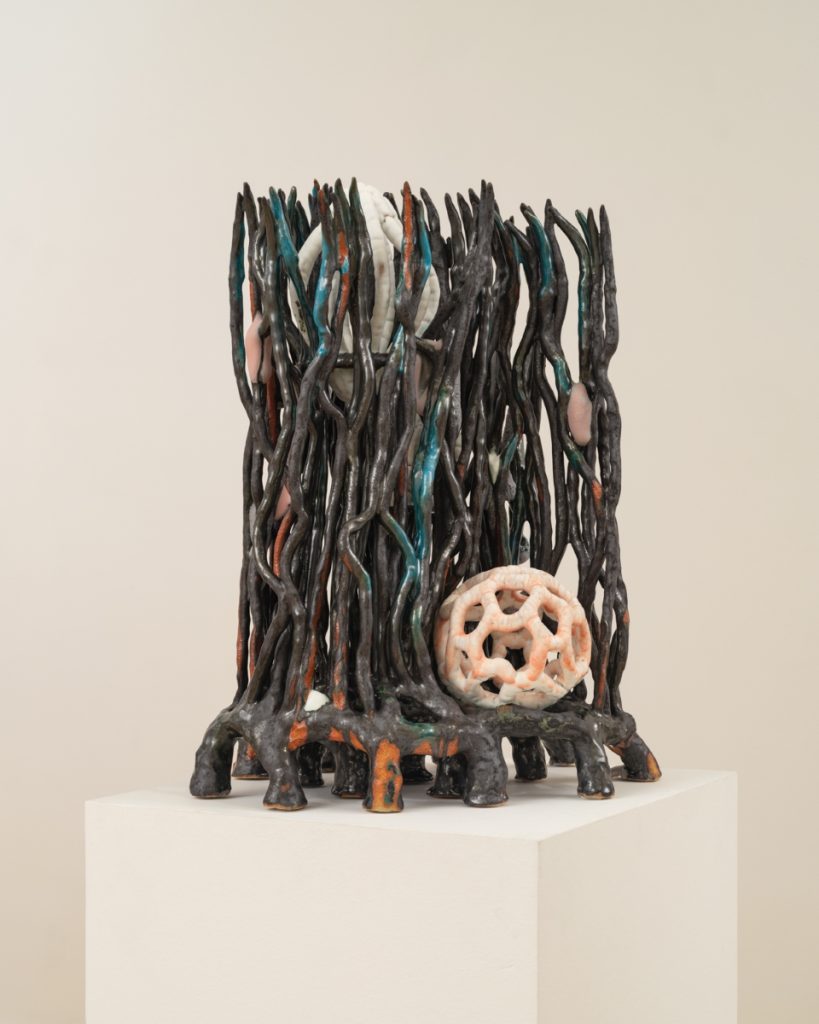
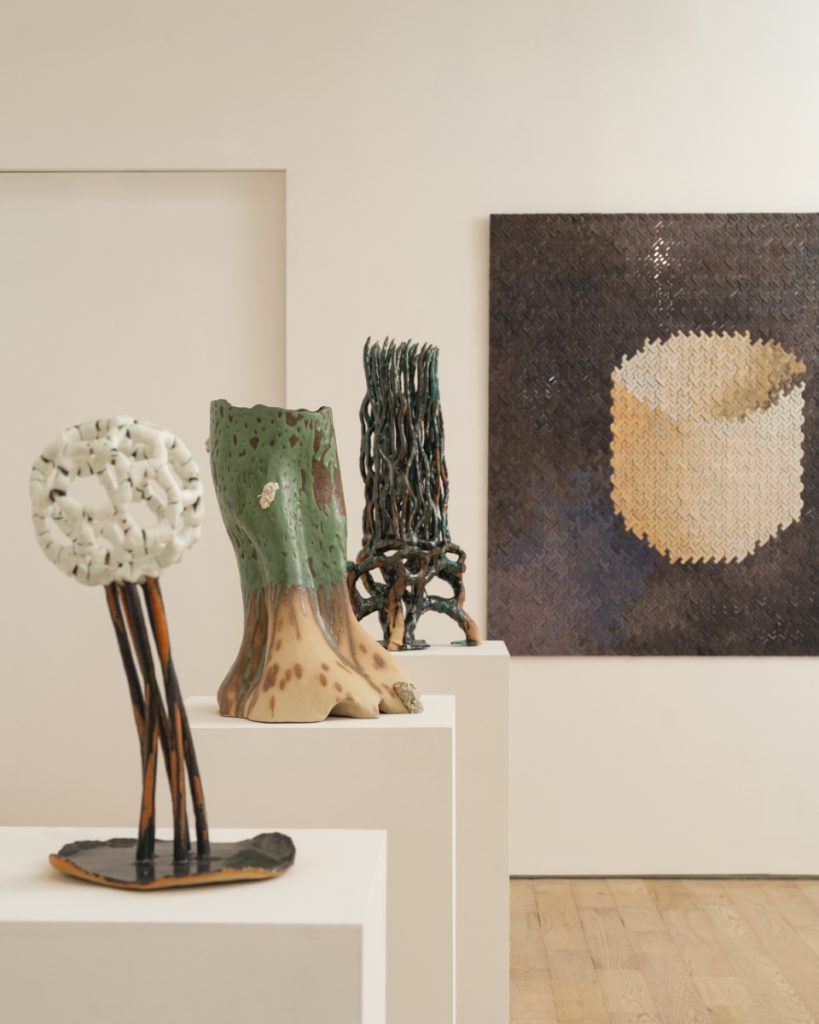
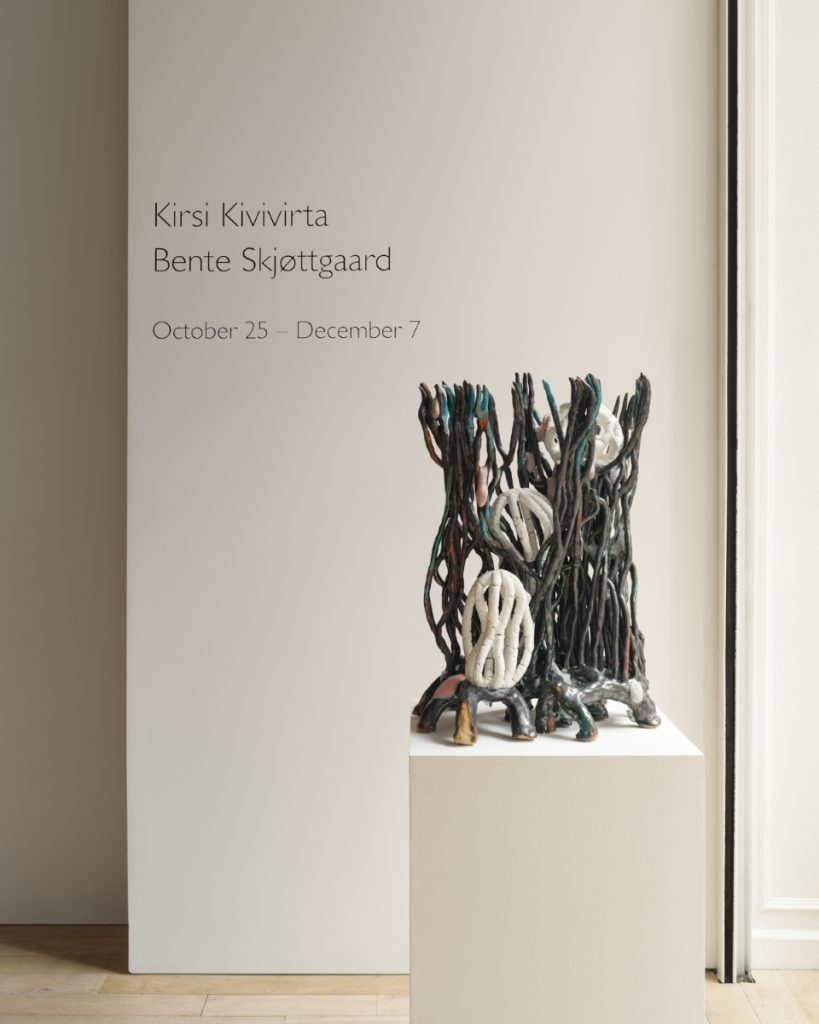
Kirsi Kivivirta and Bente Skjøttgaard is on view at HB381 Gallery, New York
October 25 – December 7, 2024
HB381 is pleased to present an exhibition of porcelain wall works and ceramic sculptures by the artists Kirsi Kivivirta (Finnish, b. 1959) and Bente Skjøttgaard (Danish, b. 1961). The works by the two artists offer a study in the mutability of the physical world: its dynamic forces, its formal structure, and its underlying tension between complexity and dissolution.
In the ceramic constructions of Bente Skjøttgaard, we see the slow alchemy of minerals and glazes combined in the high-temperature crucible of the kiln. Her subjects emerge from loose, gestural coils and slabs of clay, which are left deliberately unglazed in places. Captured in medias res, they take on the cursory appearance of a process unfolding, a sketch, erased, drawn over, and reworked. Frequently, Skjøttgaard foregrounds the capacity of clay to exhibit opposing qualities — strength and elasticity, density and weightlessness, impressionability and durability — in sculptures based upon the structures of cloud typologies, the bonds between carbon atoms, or as here, arboreal growth and decay.
The sculptures from the Family Tree or “woodwork” series take their impetus from a research project titled the “Alchemists’ Convention.” The project provided Skjøttgaard with access to the Niels Hansen Jacobsen ceramics collection at the Vejen Art Museum, resulting in an exploration of the meeting point of stoneware clay bodies and cast metal mountings. Skjøttgaard found a particular interest in the patterning of molten metal as it escaped from plaster molds, flowing into gaps and natural rivulets in the sand underfoot. The cooling metal which solidified in these hollows had a crumpled, asymmetrical appearance, riddled with delicate surface variations. Affixing these small pewter extrusions around the vertical cylinder of a tree trunk formed from clay, the sculptures become substrates for a process of growth and metamorphosis, the steady accretion and transformation of matter as modeled by the forest ecosystem itself.
Skjøttgaard’s Family Trees molder with loosely textured glaze, gathering matter, color, and complexity as though suffused with a matted coat of leaf litter, the soft fuzz of moss, or the onset of fungal growths. Each form is frozen in movement, listing sideways as toward the sun or against buffeting gusts of wind. Each seems to bear the mark of seasonal cycles of frost, storms, and drought. They are rooted in the same language of nature—boughs and branches, curling tendrils and bifurcating veins—that inspired Art Nouveau’s artisans like Jacobsen; nevertheless, Skjøttgaard stakes a less ornamental claim for nature’s relationship to culture, not as a site of beauty or repose, but rather as a highly complex, intricately varied crossroads of material transformation.
In contrast, Kivivirta’s tiled porcelain mosaics probe the edges of optical perception. Situated in the crepuscule of near-monochrome black and white, a place of shadows and indistinct recognition, it takes a moment for the eyes to adjust. Subtler chromatic tones seep through, suffusing each precisely carved tile with an echo, a vaporous charcoal gray or umber that recalls the earth and the over 2000° C furnace of the kiln. Kivivirta’s imagery, likewise, is soft, somnolent, and familiar, composed of welcome elementary forms that feel both primal yet inconspicuous. The eye wanders across the porcelain surfaces, probing their outlines: the upright circle of a rounded seat or the open form of a vessel, perhaps a rudimentary bucket left out to gather rainwater; a toppled cylinder; a tunnel passing through a rising bluff; the taut skin of a drum pricked by infinitesimal vibrations.
Other compositions are more porous, pervaded by humidity. Images of air currents rise and circulate, while droplets of water descend. The scale of her work encompasses and alters the architecture in which it rests; it maintains a staid, muted equilibrium, activating philosophical rumination on the essential qualities and visual instabilities of Cartesian space, underscoring the inevitable pull between our ideal imaginings and the hard, grounded fact. In concert, Kivivirta and Skjøttgaard reimagine our relationship with the non-human and the fluctuating sphere of the planet that encompasses us, whether through the rich variety of life found in a copse of trees or the molecular bonds of hardening clay and mineral glaze.
Contact
info@hb381gallery.com
HB381
381 Broadway
New York, NY 10013
United States
Captions
Installation views by Joe Kramm




